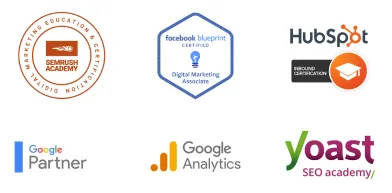TO LEARN IS TO GROW
Learning Center
We do our research and publish our results. Should probably call this the Growing Center.


How Does a Press Release Work?
Are you looking forward to writing a press release? Discover the how-to and the must-do that will help your story be published.
When figuring out how a press release works, it’s probably a good idea to first know exactly what a press release is. A press release is a short, captivating news story that is written and sent to targeted members of the media. The goal of a press release is to catch the interest of a journalist or publication.
The press release should contain all the essential information (who? what? where? when? how? and most importantly why?) so that the journalist can easily produce their own story from the information you have given them. Press releases are also an effective way to communicate information about upcoming events or important news.
Why Do I Need A Press Release?
Now that we know what a press release is, you may be wonder, why do I need one?
A press release could help you in a number of ways. It can:
Announce an event, schedule, study, campaign, workshop, or election of new leaders.
Tell people why you think this development is news.
Show your perspective on the development.
Increase the visibility of your leaders (if quoted in the release).
Remind people of what your group does and how active in the community you are.
Allow you to highlight or summarize a report.
As you can see there are many different reasons for writing a press release. Your reason will be individually catered to the needs of your business and what information you are trying to get out and share with those around you in your community. A few different ideas for what a press release can be about are:
News of upcoming public events.
Reports of recent public events.
Reports of organizational changes that may be of interest to the general public.
Reports of awards, prizes, grants or publications connected with your cause.
Reports of hiring or promotions of staff members, particularly top managers.
Announcements of recruiting drives for volunteers.
Announcement of the start-up of your next season of classes, training sessions, services, etc.

When writing your release, there are some things to keep in mind while preparing so that it can truly be successful.
Keep It Short.
Your press release should be one page or less. You need to give just enough information that if the reporter who sees your release wants more information they will contact you for more.
Be Relevant.
You need to know the type of content that the reporter writes about before you send your release to them. If you send releases on topics that they don’t normally write about, they will toss your release and never even look at it. You need to make sure you are sending your releases to someone that will want to take your story and run with it.
Include White Space.
One page might not seem like enough space to get your message across and get all your information written down. Use at least half-inch margins and 10 point font, nothing smaller. Make sure there are spaces between paragraphs, headlines, etc. Ideally, the release should take only a glance to discern what it is about. Journalists don’t want to have to use a magnifying glass to read your 6 point font!
Use a Descriptive Subject Line.
Your subject line needs to be catchy and descriptive. This typically is the first thing that will be read, and most journalists will base whether or not they want to write an article about a press release on the subject line. It needs to grab their attention, but also remember it needs to be relevant.
Once your press release is written and turned in to whatever media outlet you have decided to turn it into, then the waiting game happens. You will wait until someone reads your release, and decided that they want to write about what you have submitted. You might get a call from the journalist, or a reporter, who wants to cover your situation and needs more information. At this time you would possibly have an interview and then the journalist or reporter would write the whole story and publish it. Your story might be published in a newspaper, online or even on air!
The main purpose is to get your information out to the public. So when your press release is finished, ask yourself three questions; Is your release compelling to you, would a reporter find it compelling, and is this the type of thing reporters generally cover? If the answers is no to either of the three, you might need to rethink your approach.

How Does a Press Release Work?
Are you looking forward to writing a press release? Discover the how-to and the must-do that will help your story be published.
When figuring out how a press release works, it’s probably a good idea to first know exactly what a press release is. A press release is a short, captivating news story that is written and sent to targeted members of the media. The goal of a press release is to catch the interest of a journalist or publication.
The press release should contain all the essential information (who? what? where? when? how? and most importantly why?) so that the journalist can easily produce their own story from the information you have given them. Press releases are also an effective way to communicate information about upcoming events or important news.
Why Do I Need A Press Release?
Now that we know what a press release is, you may be wonder, why do I need one?
A press release could help you in a number of ways. It can:
Announce an event, schedule, study, campaign, workshop, or election of new leaders.
Tell people why you think this development is news.
Show your perspective on the development.
Increase the visibility of your leaders (if quoted in the release).
Remind people of what your group does and how active in the community you are.
Allow you to highlight or summarize a report.
As you can see there are many different reasons for writing a press release. Your reason will be individually catered to the needs of your business and what information you are trying to get out and share with those around you in your community. A few different ideas for what a press release can be about are:
News of upcoming public events.
Reports of recent public events.
Reports of organizational changes that may be of interest to the general public.
Reports of awards, prizes, grants or publications connected with your cause.
Reports of hiring or promotions of staff members, particularly top managers.
Announcements of recruiting drives for volunteers.
Announcement of the start-up of your next season of classes, training sessions, services, etc.

When writing your release, there are some things to keep in mind while preparing so that it can truly be successful.
Keep It Short.
Your press release should be one page or less. You need to give just enough information that if the reporter who sees your release wants more information they will contact you for more.
Be Relevant.
You need to know the type of content that the reporter writes about before you send your release to them. If you send releases on topics that they don’t normally write about, they will toss your release and never even look at it. You need to make sure you are sending your releases to someone that will want to take your story and run with it.
Include White Space.
One page might not seem like enough space to get your message across and get all your information written down. Use at least half-inch margins and 10 point font, nothing smaller. Make sure there are spaces between paragraphs, headlines, etc. Ideally, the release should take only a glance to discern what it is about. Journalists don’t want to have to use a magnifying glass to read your 6 point font!
Use a Descriptive Subject Line.
Your subject line needs to be catchy and descriptive. This typically is the first thing that will be read, and most journalists will base whether or not they want to write an article about a press release on the subject line. It needs to grab their attention, but also remember it needs to be relevant.
Once your press release is written and turned in to whatever media outlet you have decided to turn it into, then the waiting game happens. You will wait until someone reads your release, and decided that they want to write about what you have submitted. You might get a call from the journalist, or a reporter, who wants to cover your situation and needs more information. At this time you would possibly have an interview and then the journalist or reporter would write the whole story and publish it. Your story might be published in a newspaper, online or even on air!
The main purpose is to get your information out to the public. So when your press release is finished, ask yourself three questions; Is your release compelling to you, would a reporter find it compelling, and is this the type of thing reporters generally cover? If the answers is no to either of the three, you might need to rethink your approach.
Growing Businesses Since 2008
We have helped hundreds of businesses just like yours. Working for or along-side of business owner, managers, staff, or even board of directors, LOJO is ready to be an asset to your business.
Our team has been curated through the years for individual skills, personalities, and capabilities. Our clients put their trust in us to help them grow. We are here to do just that.



Growing Businesses Since 2008
We have helped hundreds of businesses just like yours. Working for or along-side of business owner, managers, staff, or even board of directors, LOJO is ready to be an asset to your business.
Our team has been curated through the years for individual skills, personalities, and capabilities. Our clients put their trust in us to help them grow. We are here to do just that.




Matthew Rogers, President
iProspect Check
After spending several months reviewing multiple proposals from several different companies we engaged LOJO to develop a new website that represents our company effectively. We worked initially with Stephen Platte who helped create the scope of the project. Stephen was knowledgeable and always followed up with me on time and as promised.
He "closed the deal" for LOJO with his professionalism, service orientation and easy going approach. Once we signed the contract we were introduced to Jay Kelly who would be the creative lead for LOJO. This was the most challenging part of the project for my company, as there was no shortage of ideas from our side. Jay managed the project flawlessly, and once we had all agreed to the design, Jay introduced us to Eric.
Eric Lay is one of the founders of LOJO. Eric took the design we had developed and brought it to life. We delivered content as quickly as he requested it. Eric kept the project on task and we responded by exceeding every deadline for content. In turn, once provided, literally not a day went by that Eric didn't add the content and take the next step. In just a few weeks we launched our new website. Eric is a pleasure to work with.
His positive attitude and consultative approach really enhanced the experience and made a big difference for us in the outcome of our project. We would welcome you to visit our website to take a look at the quality work of LOJO. We are very pleased with LOJO and look forward to working with them in the future as we pursue an aggressive SEO strategy."
After spending several months reviewing multiple proposals from several different companies we engaged LOJO to develop a new website that represents our company effectively. We worked initially with Stephen Platte who helped create the scope of the project. Stephen was knowledgeable and always followed up with me on time and as promised.
He "closed the deal" for LOJO with his professionalism, service orientation and easy going approach. Once we signed the contract we were introduced to Jay Kelly who would be the creative lead for LOJO. This was the most challenging part of the project for my company, as there was no shortage of ideas from our side. Jay managed the project flawlessly, and once we had all agreed to the design, Jay introduced us to Eric.
Eric Lay is one of the founders of LOJO. Eric took the design we had developed and brought it to life. We delivered content as quickly as he requested it. Eric kept the project on task and we responded by exceeding every deadline for content. In turn, once provided, literally not a day went by that Eric didn't add the content and take the next step. In just a few weeks we launched our new website. Eric is a pleasure to work with.
His positive attitude and consultative approach really enhanced the experience and made a big difference for us in the outcome of our project. We would welcome you to visit our website to take a look at the quality work of LOJO. We are very pleased with LOJO and look forward to working with them in the future as we pursue an aggressive SEO strategy."

Matthew Rogers, President
iProspect Check
The team at LOJO were wonderful to work with. They are well organized and very patient as we worked through our marketing strategy and developed a well thought out and clear action plan at a reasonable price. We will definitely be back for our future campaign needs."

Jon Crosby, Founder
Dazil

